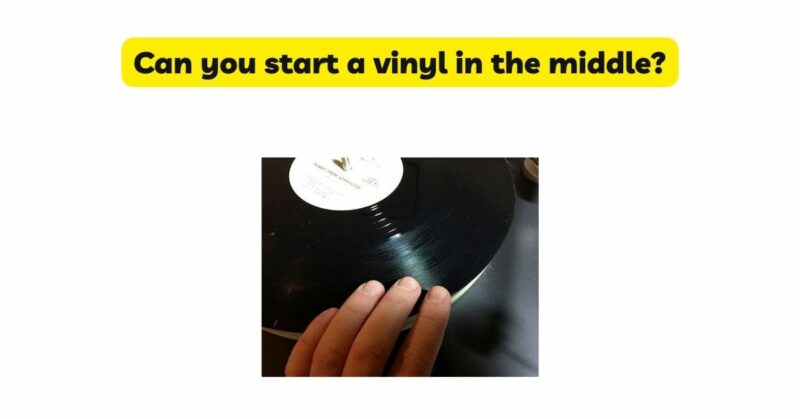Vinyl records have experienced a resurgence in popularity due to their warm sound quality and nostalgic appeal. As vinyl enthusiasts explore the nuances of vinyl playback, a common question arises: Can you start a vinyl record in the middle? In this article, we will delve into the mechanics of vinyl records and turntables to understand the possibilities and limitations of starting a vinyl record in the middle. We will explore the concept of track indexing, the role of tonearms and styluses, and the potential challenges that may arise from attempting to start a record in the middle. By shedding light on this topic, we aim to help vinyl enthusiasts enhance their listening experiences and discover new ways to interact with their vinyl collections.
I. Understanding Vinyl Records and Track Indexing
- Vinyl Record Structure: Vinyl records consist of tracks, each with its own grooves that contain the recorded audio. Tracks are separated by small gaps known as lead-ins and lead-outs.
- Track Indexing: Track indexing is the process of marking the start and end points of each track on a vinyl record. These markers enable listeners to locate specific tracks easily.
II. The Role of Turntables in Vinyl Playback
- Turntable Components: A turntable consists of a platter, tonearm, cartridge, and stylus. The platter spins the record, while the tonearm holds the cartridge and stylus, allowing them to track the grooves.
- Automatic vs. Manual Turntables: Some turntables have automatic features that allow precise track positioning and automatic tonearm movement. Manual turntables require manual cueing and tracking adjustments.
III. Challenges of Starting a Vinyl Record in the Middle
- Track Identification: Starting a vinyl record in the middle can be challenging because there are no visual indicators on the record itself to identify the exact position of a specific track.
- Stylus Placement: Placing the stylus on a specific groove requires precision. Starting in the middle of a record without proper cueing or indexing may result in inaccurate stylus placement and potential damage to the grooves.
- Skipping and Skating: When attempting to start a vinyl record in the middle, the stylus may encounter the remnants of the previous track’s grooves, causing skipping or skating. This can lead to distorted audio or even damage the stylus or record.
IV. Techniques for Starting a Vinyl Record in the Middle
- Visual Markers: Some vinyl records feature visual markers, such as colored sections or additional artwork, that indicate specific sections or tracks. These markers can assist in identifying the desired starting point.
- Manual Cueing: Manual turntables allow for precise cueing, where the tonearm is gently lifted and manually moved to the desired starting point. This technique requires careful control and finesse to avoid damaging the grooves.
- Digital Assistance: In the digital age, there are software applications and devices that can analyze vinyl recordings and provide track information. These tools can help identify the starting point of a specific track, allowing for more accurate manual cueing.
V. Exploring Alternative Listening Experiences
- Continuous Playback: Some vinyl records are designed for continuous playback, where the tracks blend seamlessly into one another. These records provide a different listening experience, allowing listeners to enjoy an uninterrupted flow of music.
- Digital Playback: Digital music platforms offer the convenience of starting a specific song or track at any point. By digitizing vinyl records, listeners can create digital playlists or use DJ software to mix tracks and start songs at desired points.
Conclusion
While starting a vinyl record in the middle may pose challenges and risks, there are techniques and tools available for those eager to experiment. Manual cueing, visual markers, and digital assistance can enhance the chances of accurately starting a record in the middle. However, it is important to remember that vinyl records are primarily designed for sequential playback, and deviating from this norm may compromise the listening experience or even cause damage. Regardless of whether one decides to start a vinyl record in the middle or explore alternative listening methods, the appreciation for vinyl records lies in their unique analog charm and the sense of connection to the music’s physical form.


